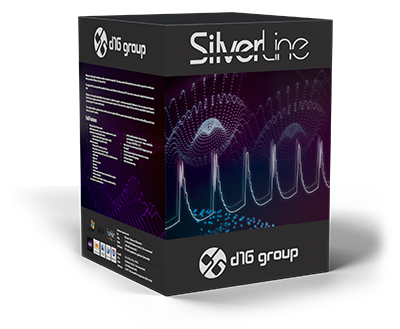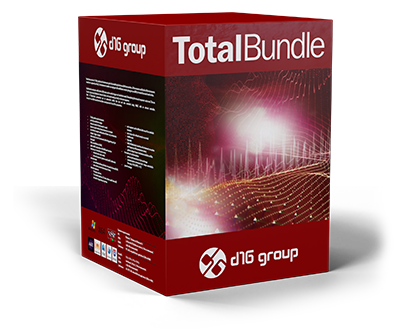Products


The Virtual Space Reverb
Early reflections are generated through painstakingly accurate simulation of a diverse range of real-world spaces, and the positioning of speakers and microphones within them.
Hybrid algorithm for quality and performance
A dynamic delay network defines the Late reflections, blending seamlessly with the Virtual Space simulation to create super realistic rooms, at surprisingly low cost to your CPU *.
Convenient mixer
Effortlessly balance the direct signal, early reflections and late reflections using a simple three-channel mixer.
Under the hood
Compact and intuitive reverb plugin creates amazingly authentic real-world spaces without bogging you down in complex parameters.
The hybrid algorithm at the heart of Spacerek fuses modelled virtual spaces to a dynamic delay
network, generating reverb tails with supremely realistic early reflections, dense, colourful late
reflections, and separately adjustable ER and LR pre-delay times. Dozens of emulated room types
take in halls, towers, chambers, tunnels and much more, and each one integrates a variety
of preset stereo microphone and speaker setups.
Spacerek also makes balancing the Direct signal, Early reflections and Late reflections easy with
its three-channel mixer; while the highly musical Tilt EQ and Low Cut filter modules
provide effortless shaping of the overall tail. And as each Reverb Model is
pre-configured for left-right or mid-side stereo operation, tweaking width and spatialisation is a snap.
Spacerek doesn’t put the squeeze on your system, either – indeed, when you hear it, you can’t
fail to be impressed by its CPU-friendliness (compared with typical audio simulation techniques).
Early reflections - Virtual Space Reverb
Early reflections are generated by our proprietary Virtual Space Reverb engine, which simulates a diverse array of real-world spaces with painstaking accuracy. Each Reverb Model defines not only the acoustic properties of the space it represents, but also the positioning of the stereo speakers and microphones used to send the source signal through that space, for even greater environmental realism and versatility.
Late reflections - Hybrid algorithm
The late reflections are built up by a responsive dynamic delay network, which blends seamlessly with the Virtual Space Reverb's early reflections to create an incredibly natural sounding reverb tail. And despite the quality and complexity of the acoustic modelling involved, Spacerek's innovative, optimised hybrid design keeps CPU usage lower than you might expect.
Early / Late Pre Delay
Independent Early and Late reflection Pre-Delay controls allow up to 1 second of start time offset to be applied to each, adjustable in nanoseconds, microseconds and milliseconds.
114 stunning Reverb Models
Spacerek's expansive roster of modelled rooms lets you summon up vivid virtual stages of many kinds – from booths, chambers and halls to tunnels, chapels and towers – and switch between them at a click. Each room takes in multiple microphone and speaker configurations, too, for a total of 114 different Reverb Models, covering all your mixing and sound design bases.
Convenient mixer
Spacerek's three component signals – Direct, Early reflections and Late reflections – come together in a straightforward mixer. Quickly and easily set levels and stereo positioning, the latter in left-right or mid-side mode, depending on the selected Reverb Model.
Tilt EQ and Low Cut filter
Two stages of musical frequency shaping enable tonal customistation of the tail, for applying those crucial finishing touches to your reverb. The Tilt EQ provides instant boosting of lows or highs, while the Low Cut filter is ideal for clearing mud and rumble out of the mid and/or side signals.

Early reflections - Virtual Space Reverb
Early reflections are generated by our proprietary Virtual Space Reverb engine, which simulates a diverse array of real-world spaces with painstaking accuracy. Each Reverb Model defines not only the acoustic properties of the space it represents, but also the positioning of the stereo speakers and microphones used to send the source signal through that space, for even greater environmental realism and versatility.
Late reflections - Hybrid algorithm
The late reflections are built up by a responsive dynamic delay network, which blends seamlessly with the Virtual Space Reverb's early reflections to create an incredibly natural sounding reverb tail. And despite the quality and complexity of the acoustic modelling involved, Spacerek's innovative, optimised hybrid design keeps CPU usage lower than you might expect.
Early / Late Pre Delay
Independent Early and Late reflection Pre-Delay controls allow up to 1 second of start time offset to be applied to each, adjustable in nanoseconds, microseconds and milliseconds.
114 stunning Reverb Models
Spacerek's expansive roster of modelled rooms lets you summon up vivid virtual stages of many kinds – from booths, chambers and halls to tunnels, chapels and towers – and switch between them at a click. Each room takes in multiple microphone and speaker configurations, too, for a total of 114 different Reverb Models, covering all your mixing and sound design bases.
Convenient mixer
Spacerek's three component signals – Direct, Early reflections and Late reflections – come together in a straightforward mixer. Quickly and easily set levels and stereo positioning, the latter in left-right or mid-side mode, depending on the selected Reverb Model.
Tilt EQ and Low Cut filter
Two stages of musical frequency shaping enable tonal customistation of the tail, for applying those crucial finishing touches to your reverb. The Tilt EQ provides instant boosting of lows or highs, while the Low Cut filter is ideal for clearing mud and rumble out of the mid and/or side signals.
114 stunning Reverb Models
Many space types with several speaker-mic setups each
Screen fit
Several UI sizes and HiDPI support for better screen fit
MIDI Learn
MIDI Learn for easy controller assignment
Endorsement
Reviews
Artists
Downloads
Manuals
User Manual - English versionSystem requirements
Windows PC
- OS version
- Windows 7 or newer
- CPU
- Intel x86 / AMD x86
- Software
- VST2 / VST3 / AAX compatible host application (32bit or 64bit)
- Sample rate
- ≥ 44.1 kHz
Apple Mac
- OS version
- Mac OS X 10.13 to macOS 14
- CPU
- Intel x86 / Apple Silicon
- Software
- VST2 / VST3 / AU / AAX compatible host application (64bit only!)
- Sample rate
- ≥ 44.1 kHz
Document containing system requirements for entire D16 Group plug-in line-up you can download from here Compatibility Chart
Note
This product is not a standalone program so you need a host application to use it.














